“Have you ever tried raicilla?” they asked, late into a mezcal-soaked Friday night. It was August 2016 in Austin, Texas. A few hours earlier, Jonny and I decided to do some serious mezcal research after ending the work week. The plan was to visit some of the top mezcal destinations in Austin. We began our night at Mezcaleria Tobalá above Whistler’s in East Austin. Sean, an agave guru ahead of his time, guided us through multiple interesting releases including a Wahaka VdM release distilled in a radiator. Back then, 5 different bottles of Wahaka VdM sat on the shelf. Now they are nearly extinct. Next, we tried mezcal made from the untamed Maguey Jabalí for the first time. Only later would we fully understand that Rey Campero sets a high bar if not the bar for Jabalí mezcal.
After Whistler’s, we ventured up to Techo Mezcaleria where we tried Pierde Almas 9 Botanicals. A mezcal with botanicals?! The variety of mezcals was becoming hard to track. Next we took a bit of a break as we walked south through the neighborhood to King Bee. Up until 2020, King Bee was run by an agave aficionado named Billy and his wife Colette. We’d visited a few times before but hadn’t had much face time with Billy. It was late and the bar was quiet. Billy could tell we had been on a bit of an agave rampage but we weren’t quite done yet.
Have you ever tried Raicilla?
After sipping some interesting Vago bottles, Billy asked, “have you ever tried Raicilla?” No, we had not. At this point we had never heard of Raicilla, much less tasted it. We were told that Raicilla was made in Jalisco. While big factories cranked out watery adulterated tequila with mechanized efficiency, there were a few crazy guys up in the hills making a funky spirit called Raicilla. These folks were considered more rustic than Oaxacan mezcaleros. In many cases, raicilla was made in micro batches using homemade stills. “This one tastes like blue cheese”, Billy told us. Our minds had already been blown a few times that evening: Radiator mezcal, Jabali, mezcal gin.. And now this! It was unlike anything we’d tasted before. How could these types of flavors be produced? We were intrigued. The label was bright orange with a spiraling snake: La Venenosa Sierra del Tigre. It wasn’t cheap, and the flavor probably wasn’t for everyone.. But we enjoyed it and knew it was something special. That raicilla was also the perfect nightcap to an agave adventure many years ago.
What is Raicilla?
Like mezcal, Raicilla is distilled from the agave plant. Most Raicilla is produced in the southwestern portion of Jalisco. In 2019, Raicilla received its Denomination of Origin. The Raicilla DO states that Racilla can be produced within 16 municipalities within the state of Jalisco and one in the state of Nayarit. The DO also specifies which types of agaves species can be used to produce Raicilla.
There are two main types of Raicilla which are determined by the production region and agave type. “Raicilla de la Costa” is made with Agave angustifolia sp. and Agave rhodacantha while “Raicilla de la Sierra” is produced with Agave maximiliana and Agave inaequidens. Jalisco has numerous types of Agave angustifolia, many of which haven’t been scientifically classified. Read more about the various types in our blog about Chacolo Destilado.
Esteban Morales and La Venenosa
There are a handful of raicilla brands, but we can safely assume that most agave consumers associate raicilla with the brand La Venenosa. The brand was started by Esteban Morales in 2011. When Esteban started exporting agave spirits around the world, spirits like raicilla, bacanora, and sotol were hardly even a category compared to the then-small category of mezcal. In many ways, Esteban was a visionary. In addition to La Venenosa and Mezcal Derrumbes, Esteban’s company Casa Endemica currently showcases those lesser known spirits via brands La Venenosa, La Higuera Sotol, and YoWee Bacanora.
After trying La Venenosa for the first time, we began to notice the unmistakable snake logo all over the place. Despite the relatively small batch sizes, La Venenosa had excellent distribution. A bottle here, a bottle there.. Just enough to excite and intrigue agave nerds around the world. We even spotted La Venenosa at a jazz bar in Munich, Germany. Around 2017, La Venenosa was one of the first agave spirit brands to export Puntas. The “Puntas”, or heads, of the distillate clocks in at over 60% alcohol by volume. While high alcohol… it’s packed with flavor. This was another example of the brand being ahead of its time and incredibly innovative.
Driving towards Manzanilla de la Paz
When planning our 2022 trip to Jalisco, visiting a Raicilla producer was a top priority. Thankfully we were able to connect with the man himself, Esteban Morales, who helped make the dream a reality. After spending an incredible day traveling to Zacatecas with Esteban, we arrived back at Casa Endemica HQ the next morning for round two. This time, we were heading south towards Lake Chapala, Mexico’s largest freshwater lake. The lake is 50 miles wide. The village of Manzanilla de la Paz is situated south of the lake, about an hour drive from the western edge of the lake. The area isn’t far from the border with the state of Michoacán. There are not many agave spirits producers in this part of Jalisco. This is where Don Luis Contreras has been producing his “vino de olla” for many years.
During our drive we talked with Esteban and learned more about La Venenosa and Jalisco spirits. According to Esteban, the name “raicilla” comes from it being called mezcal made from agave that has lots of visible raíces (roots) or hijuelos. When developing the La Venenosa label, he asked a few friends to come up with a design. He specifically asked them not to use a snake in the design. However, one of his friends ignored the guidelines and Esteban loved it. The artwork was inspired by petroglyphs. The colors of the labels are a reflection of the “colors” he feels during his visits with the producers at their vinatas.
Over time, Esteban established a line of raicillas reflecting the diversity of Jalisco. The state contains all five of Mexico’s natural ecosystems: arid and semi arid shrublands, tropical evergreen forests, tropical seasonal forests, grasslands, and temperate forests with oak, pine and fir trees. As we drove out of the city into the countryside, these changes in ecosystems were happening in real-time all around us.
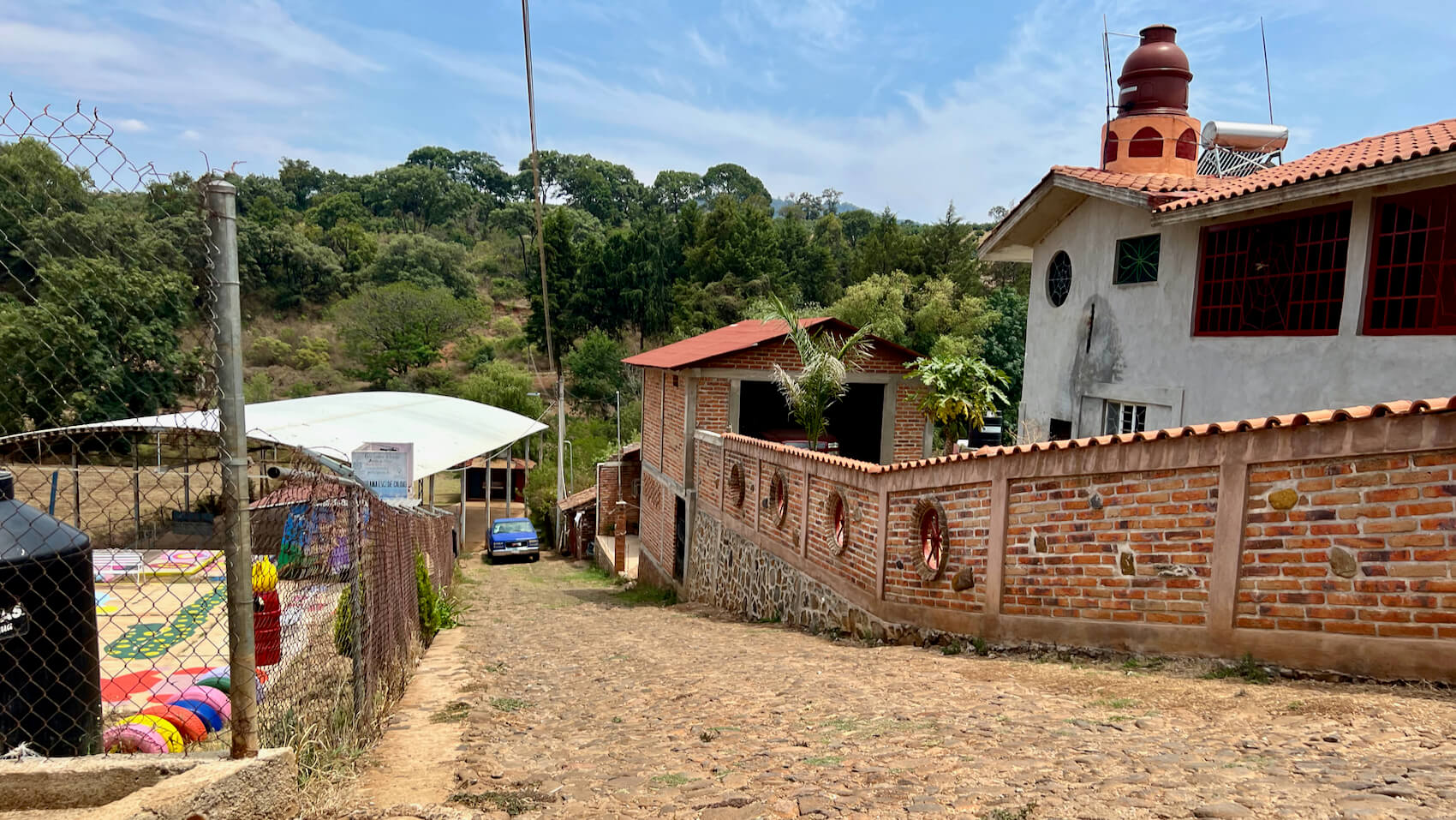
Don Luis’ neighborhood
As we sat in the van, it was a bit surreal to be driving to the source of the first raicilla we ever tried with the raicilla guy. Esteban was the person that exported the first and more diverse set of Raicillas into the US (and continues to do so). The irony was that, by the time we finally met Esteban, his bottles no longer listed the word “raicilla” on the label. Instead, the spirits formerly known as Raicilla are called “espiritus de Jalisco”. Why? In 2019, when Raicilla was granted Denomination of Origin status within Mexico, Esteban was involved. He was part of the conversation and is certifying member. He also calls the Raicilla DO a “copy-paste” of the Mezcal DO. You can interpret that how you want. Again, most consumers likely saw the word “raicilla” for the firs time on a bottle of La Venenosa. But, new bottles don’t carry the term.
It is likely that small-batch vinateros like Don Luis were entirely unaffected by the creation of the Raicilla DO. For years, he has been creating between 1,000-1,400 liters of raicilla every year for La Venenosa. By the time the “DO dust” had settled, Esteban had already established a recognizable brand that was limited and in-demand… were agave aficionados reading the fine print? Certainly, but did they care? For those learning about agave spirits, raicilla can be a bit confusing and the DO doesn’t necessarily help. Either way, Don Luis had been making it the same throughout it all.
Visiting Don Luis Contreras
As we pulled off the main road, we were only a few minutes away from Don Luis’ home and vinata. It was very much a neighborhood, not the countryside. We soon parked and began walking down a rocky road. We passed the neighborhood basketball court and arrived at Don Luis’ home.
Don Luis Contreras is a fifth-generation producer of “vino de olla”. He only produces his spirit with Maguey Bruto (Agave inaequidens) which is common in the region. This made sense given our proximity to the state of Michoacán. He doesn’t buy any plants used in his productions but instead exchanges a portion of the batch as payment. His six sons work in the avocado industry. Don Luis is searching for a grandchild to succeed him in the production of Bruto.
Don Luis uses traditional clay pots for the still, which are made in a nearby town. He leaves about 4-6 inches of the penca on the agave hearts for flavor, as well as to use as much of the plant as possible. There are lots of berry farms in the area around his vinata, which comes through in the finished “Vino de Olla”, as he calls it.
During distillation Don Luis places a grass filter at the bottom of the still to temper the foaming Bruto. Sometimes, the foam will bubble up into the destilado and then solidify after bottling. It is possible for there to be small black pieces of charred agave that you may find in a bottle. Each oven yields just 200 liters of distillate, requiring three straight days of distilling.
Despite not having any hoses or aqueducts, Don Luis changes the water in the top of the copper distillation plate by hand the entire time it is distilling. Not many heads (high alcohol) are produced because of the nature of the still, just a few drops. Don Luis cuts out the first distillation hearts and then only runs the second distillation for the tails. He then mixes in the hearts from the first run for the final distillate. So this is part single and part double distilled since it is blended (if that makes sense). This is somewhat common but not often discussed; in a way, it is a method to reduce wasted product.
Don Luis’ wife, Amelia, can run the whole vinata if needed. We were told she is very shy and doesn’t like pictures and this seemed to be the case the day we visited. Besides producing his vino de olla, Don Luis raises cocks for cockfighting and has a cockfighting ring in Jalisco called a “palenque” – the same word used to describe mezcal production areas in Oaxaca.
The production of this unique spirit is a family tradition that has been passed down for generations. Despite the low production numbers, the focus on quality and traditional methods remains a priority for Don Luis and his family.
There is no box
As we huddled under the single shaded area of the vinata, smoke drifted in and out of our direction. The entire operation could be viewed from this position. It was one of the smallest productions we have ever visited. It also may have been the first time there was only a single spirit to taste during a visit. After Esteban had given us a short tour, we bounced questions through him to Don Luis. We sipped his latest vino de barro as Don Luis worked. When it was time, he emptied the bowls of water one top of the still and refilled them by hand. We shuffled out of the way, as conversations took different directions within our group.
When it came time to leave, we asked if we could purchase some vino de olla. Thankfully, there was enough for us to share 2 liters. We paid Amelia and were soon handed a large 2 liter bottle of Coca-Cola filled with vino de olla. “He likes to drink it with Coca-Cola”, Esteban told us. Immediately I thought of mezcal snobs scoffing at the idea of mixing a fine small-batch spirit with a soft drink. Wait, but the creator of this spirit likes it with Coke.. who is anyone to make these rules? That seemed like a perfect way to describe raicilla and Esteban. When he first started out, people likely told him that raicilla would never catch on in Europe and the US, but here we are. The iconic snake bottle raicilla is a symbol of something interesting for agave aficionados around the world.


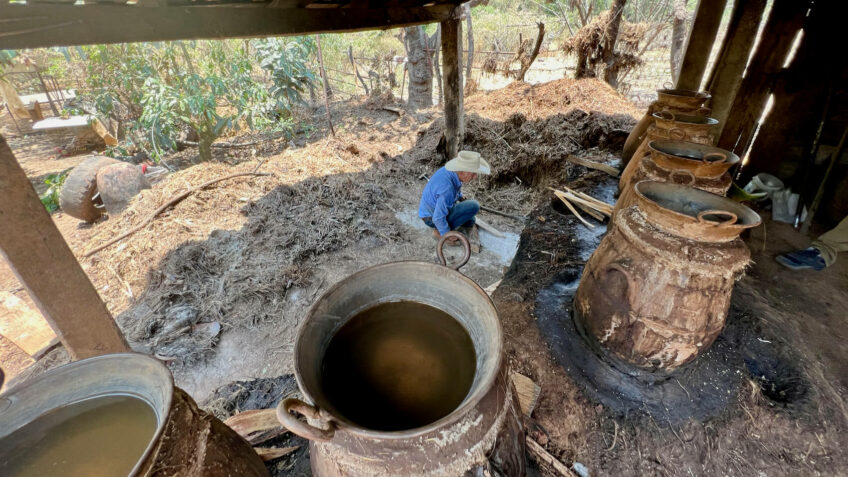
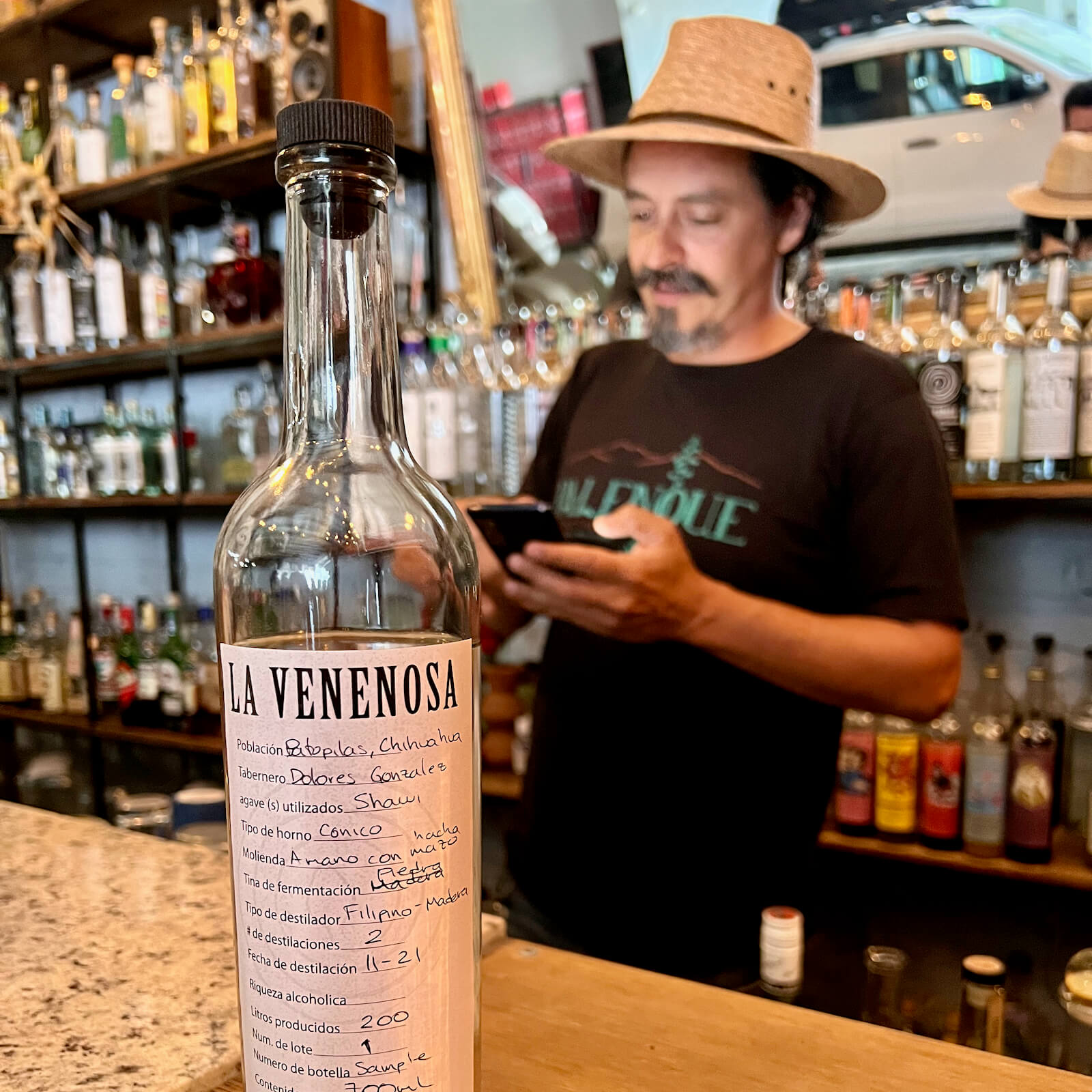
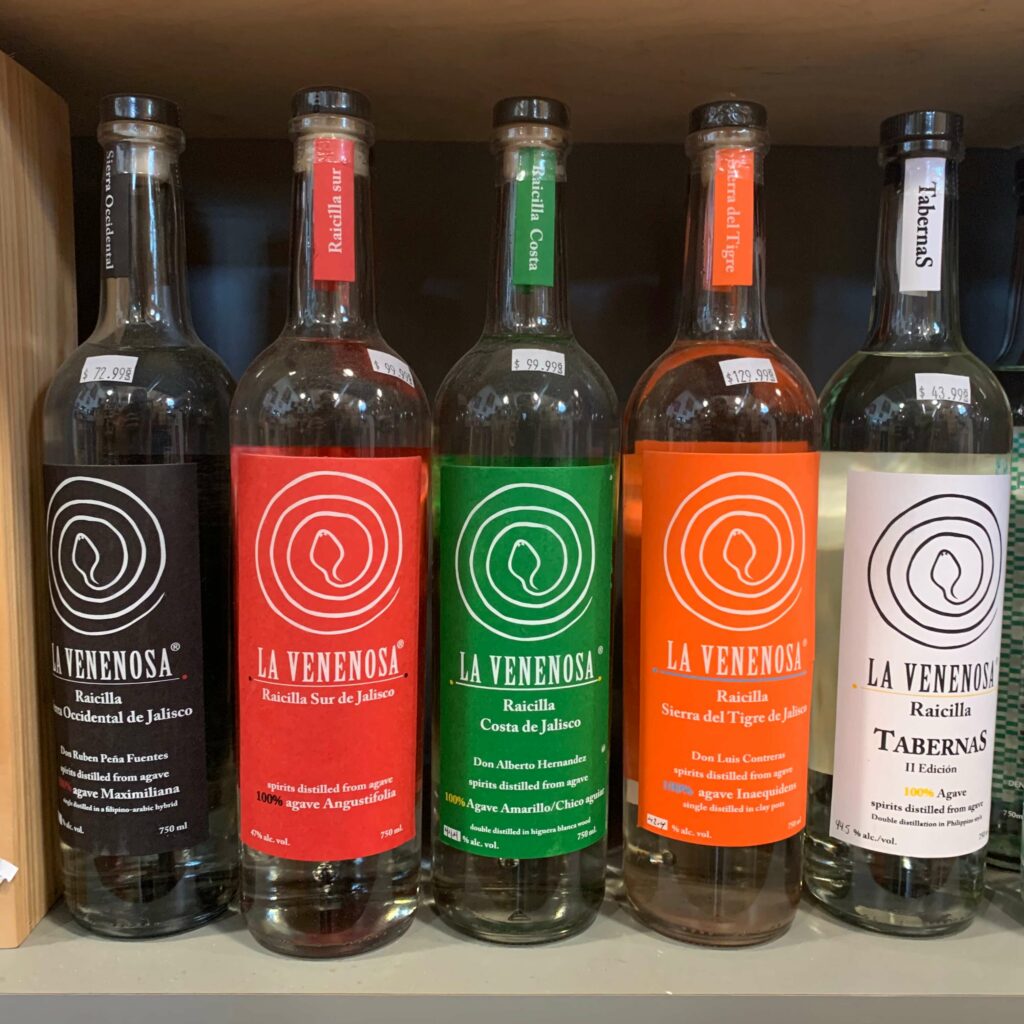
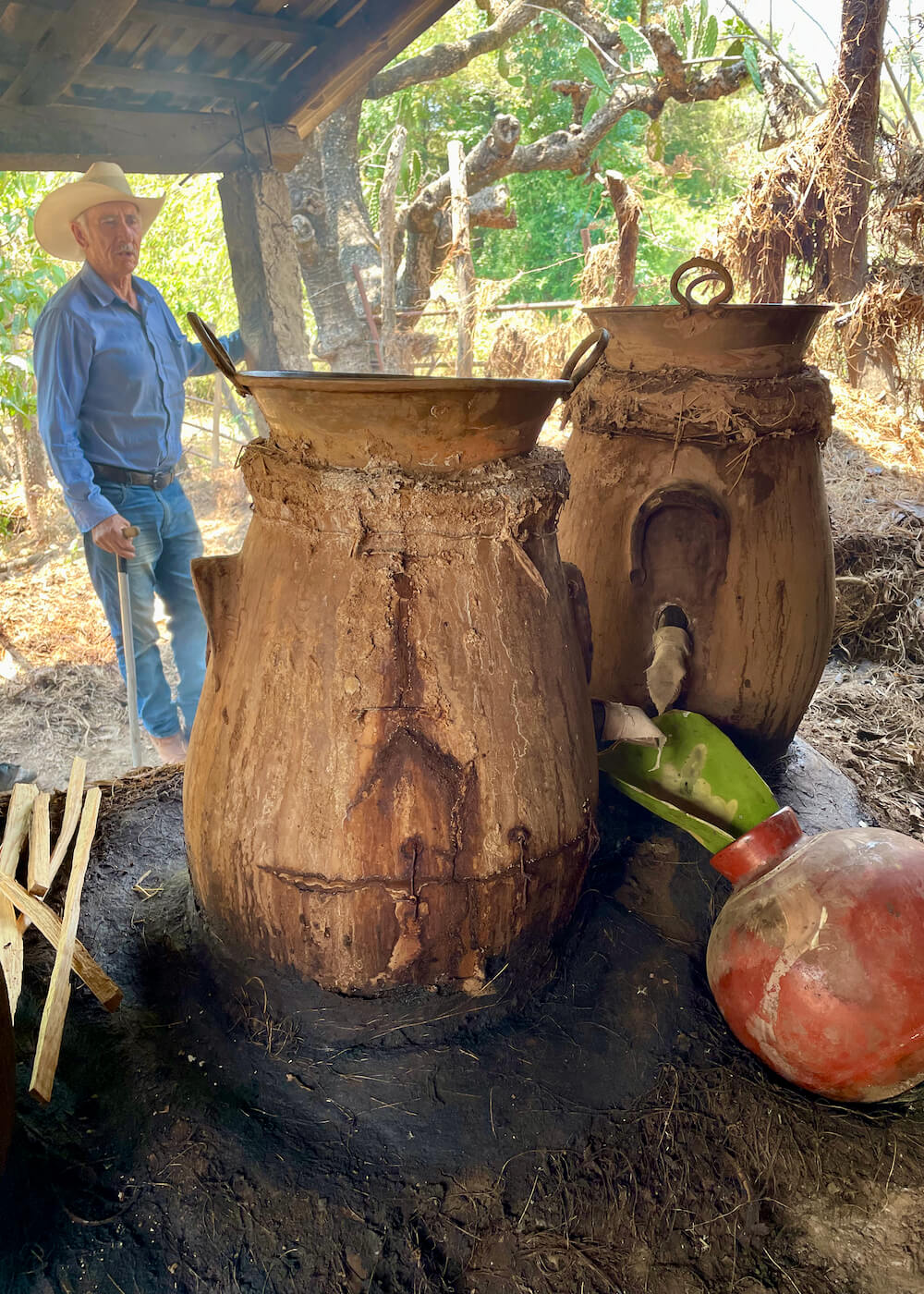
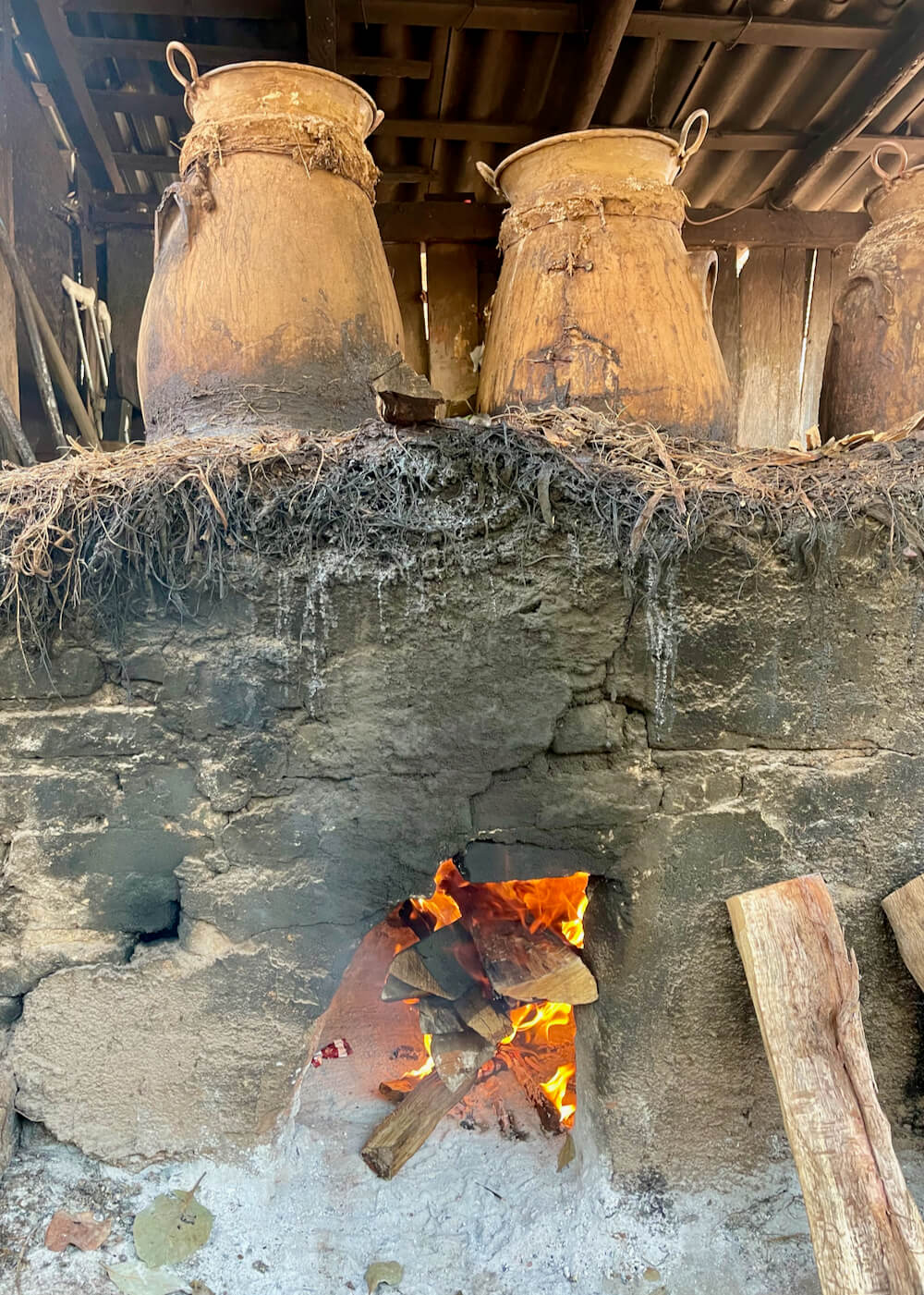
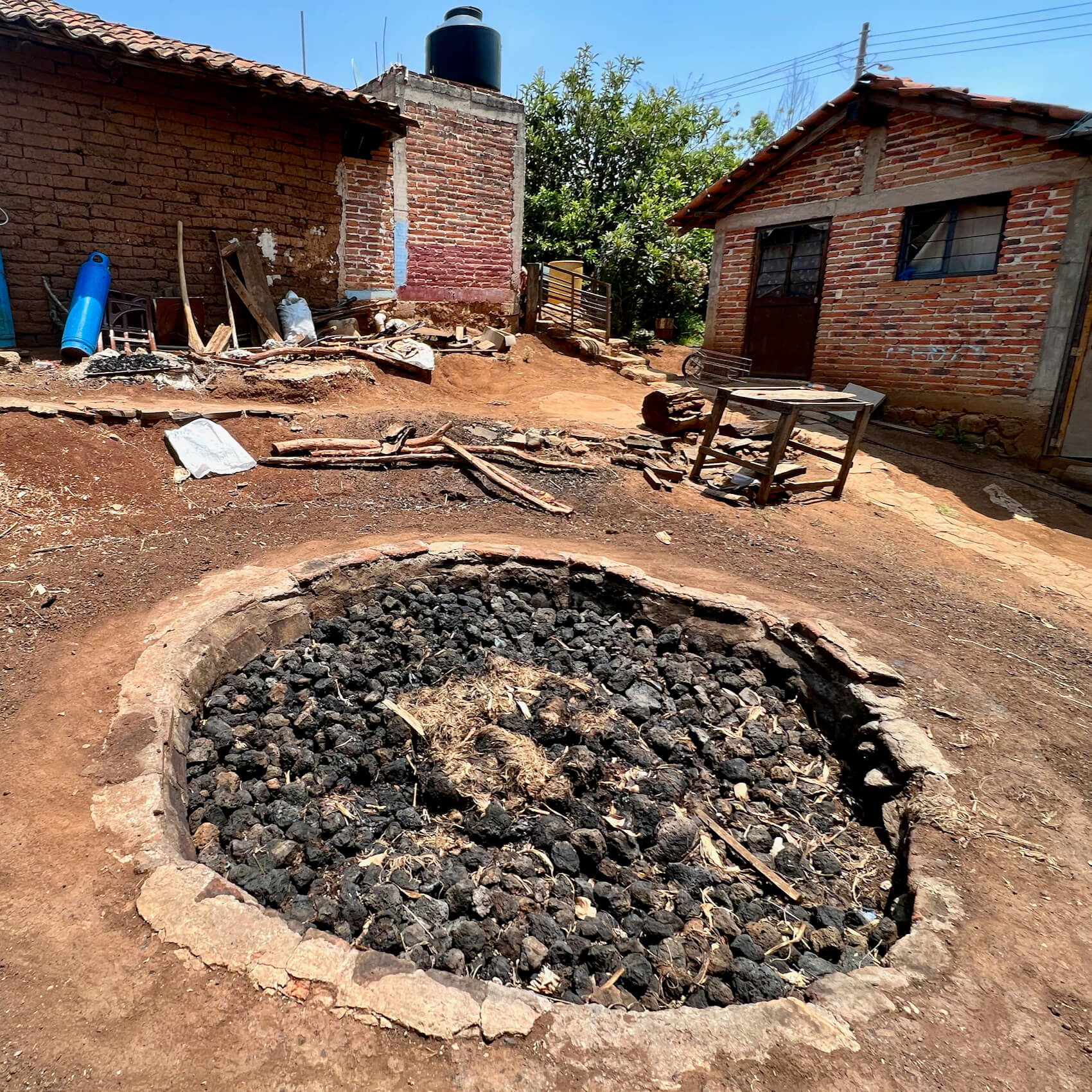
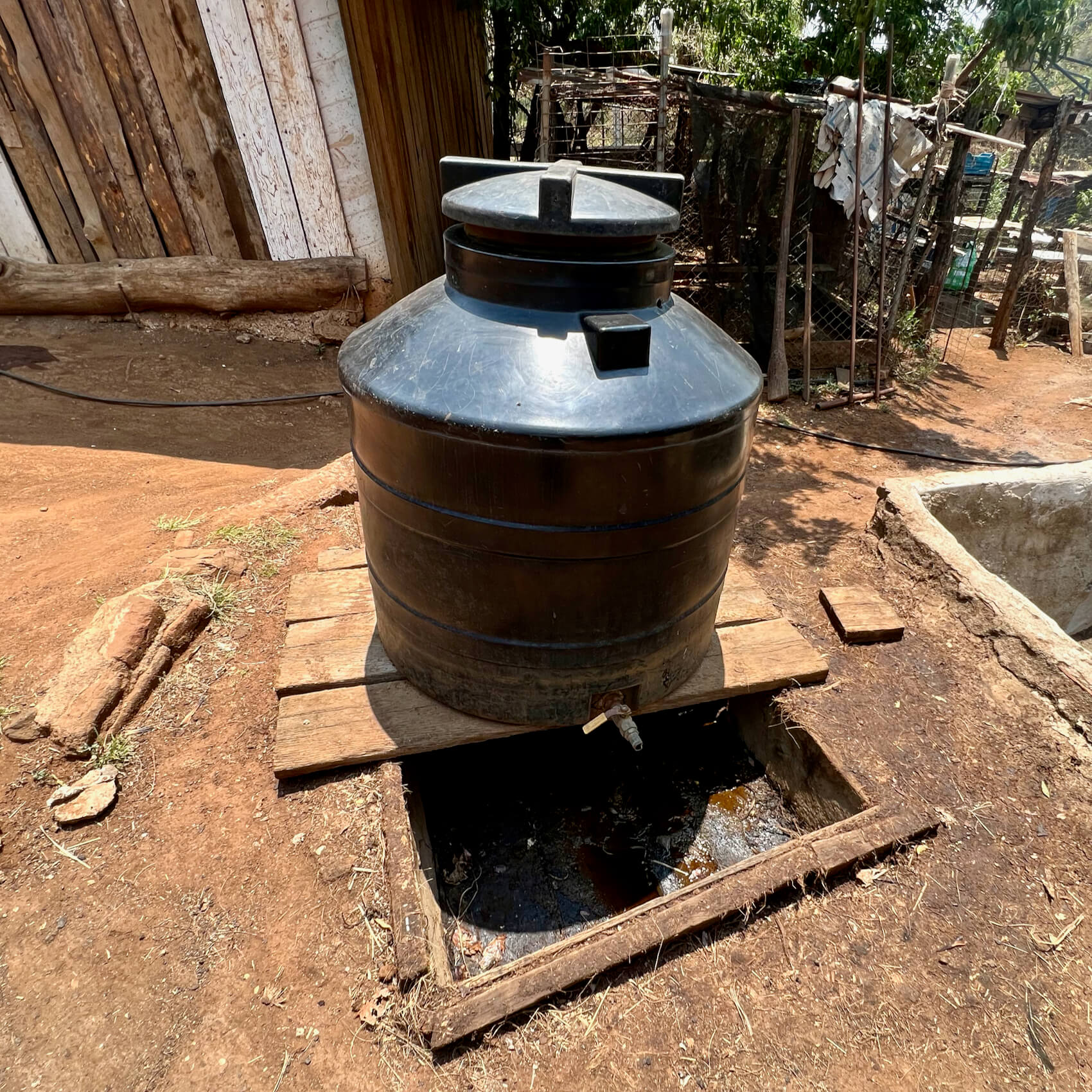
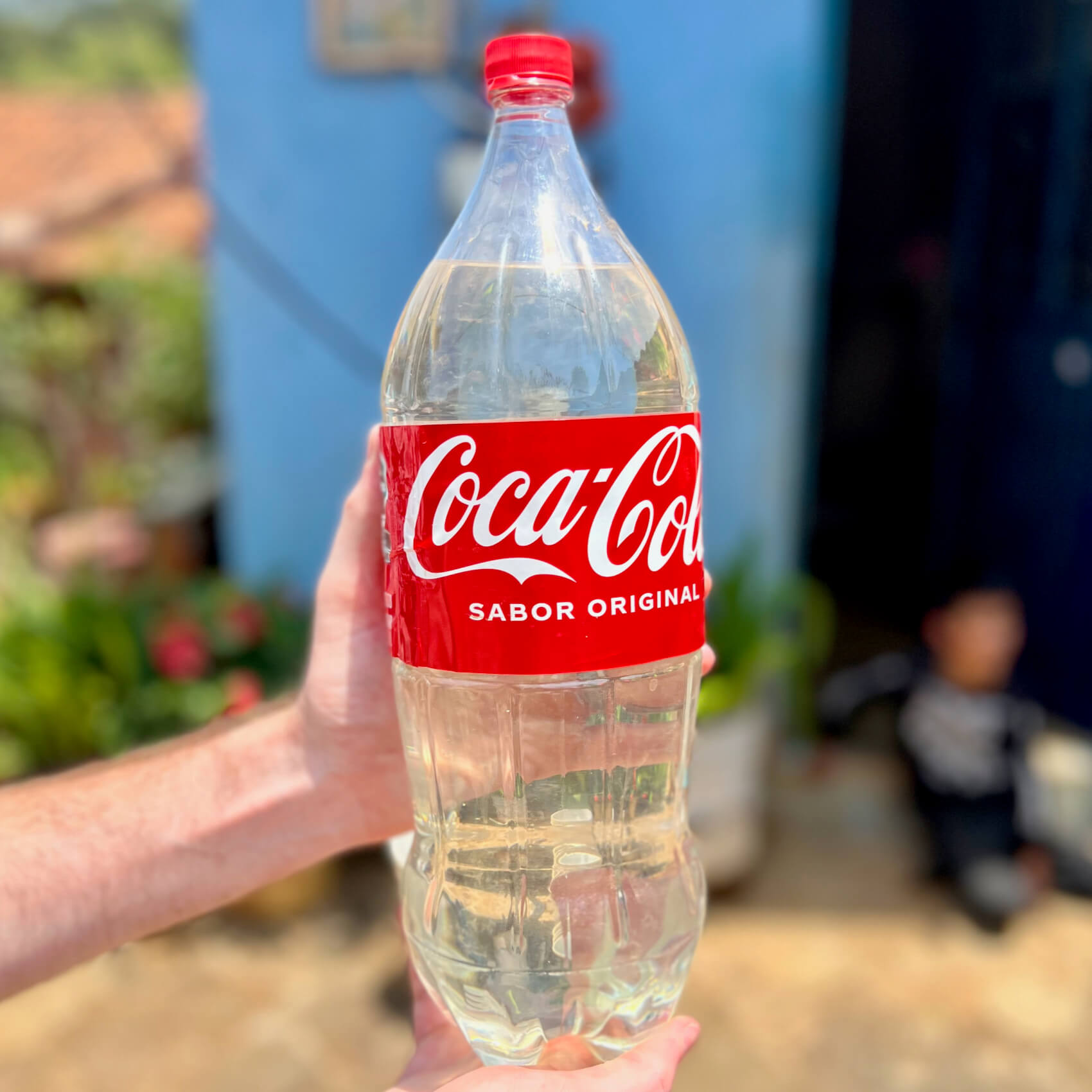
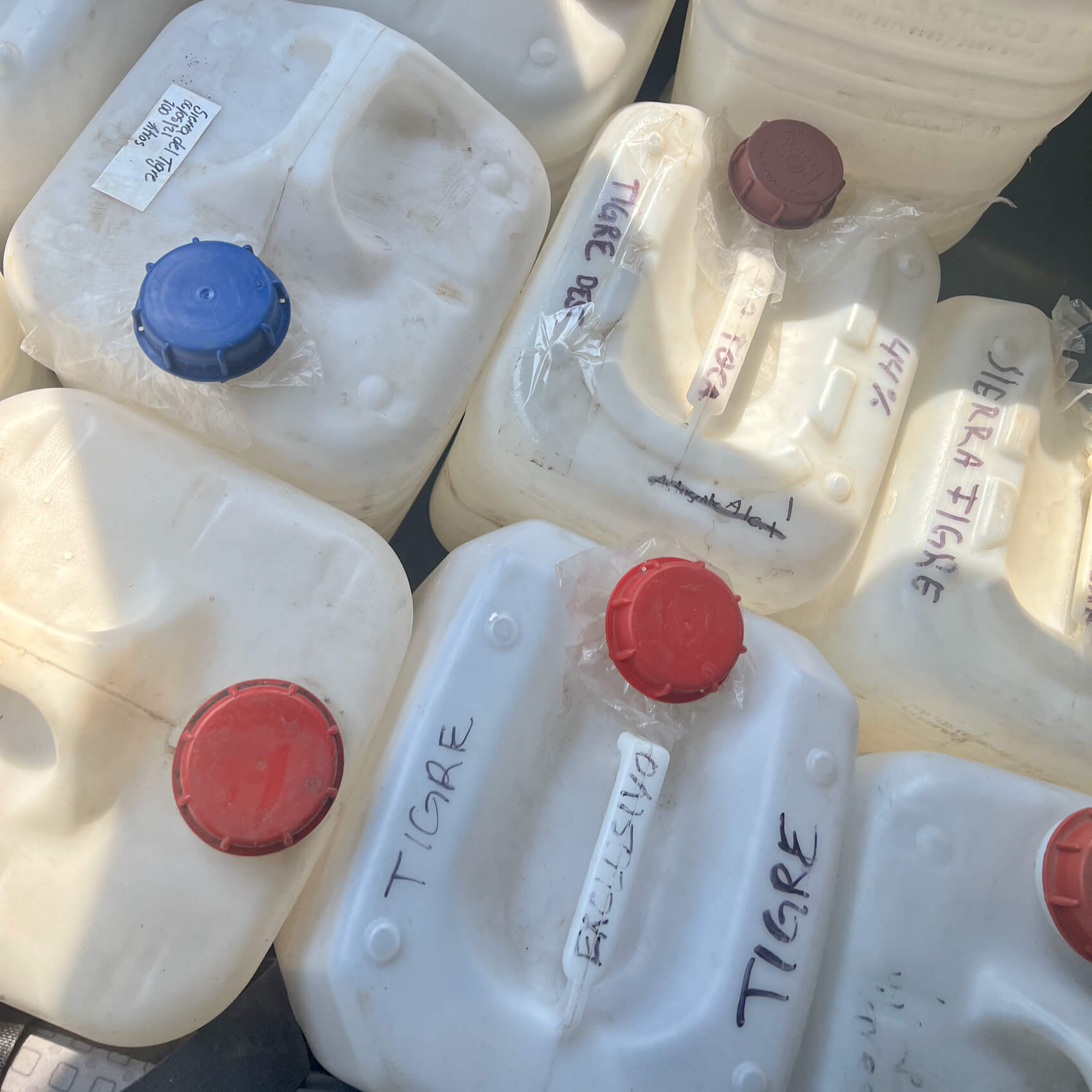

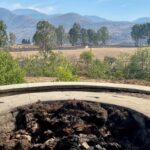
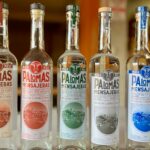
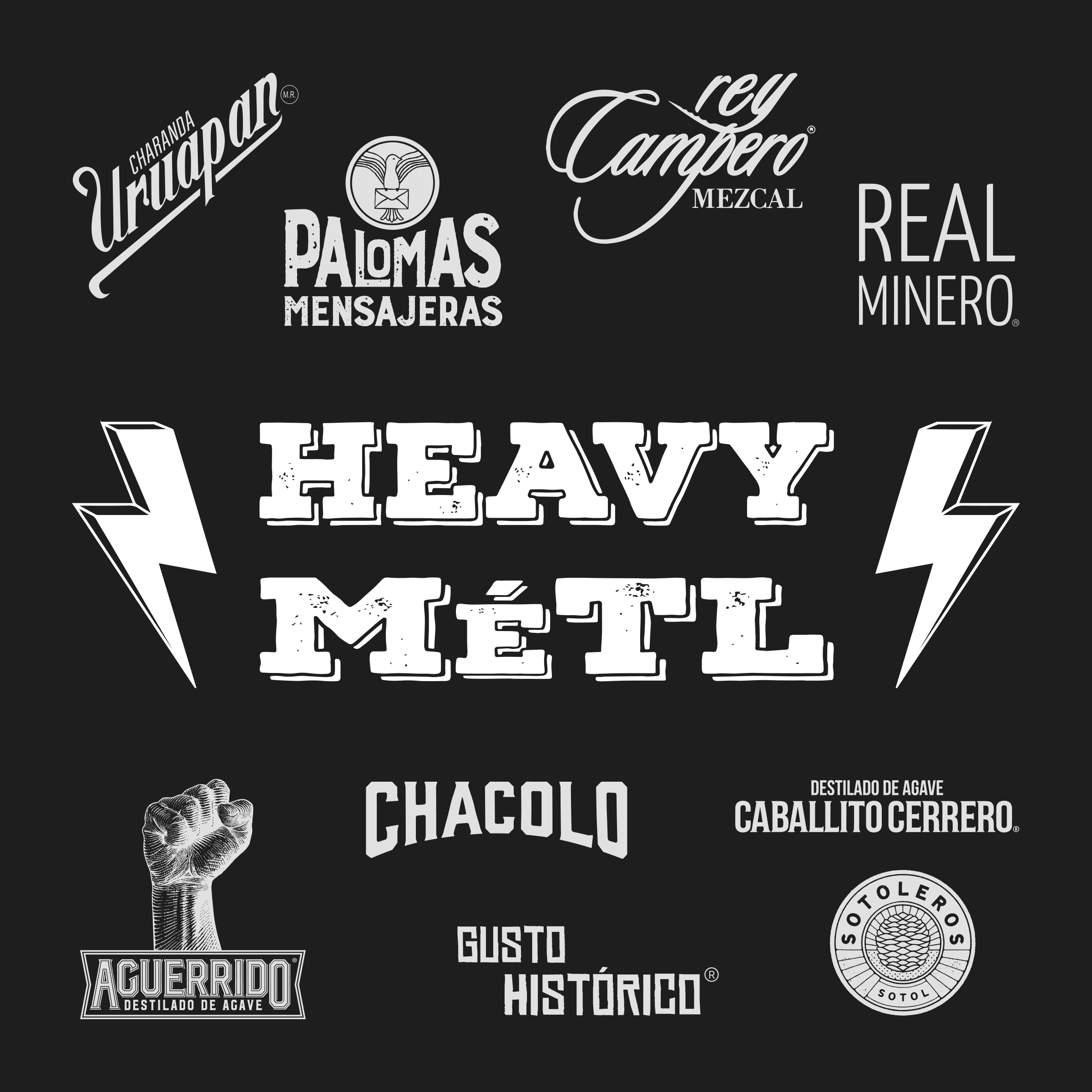
zonker17
3 months agoThank you for the story. It popped for me, as my first bottle ever purchased and tasted of raicilla was 200mL of the Tigre from Austin Shaker. I sought the blue cheese notes and was not disappointed. That said, the small bottle is perfect for the occasional swig and will last for some time to come. A little goes a long way! Maybe I should try it with some Coke.